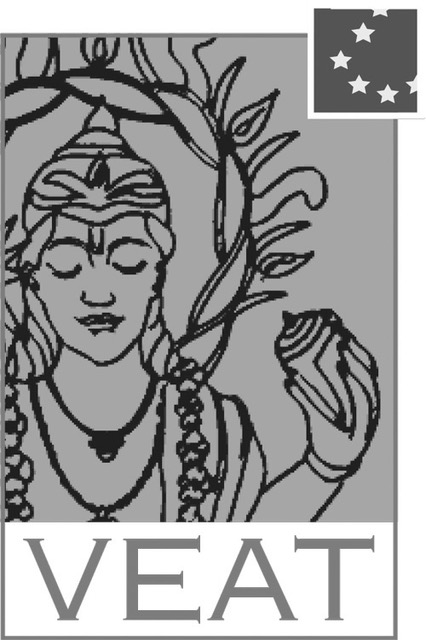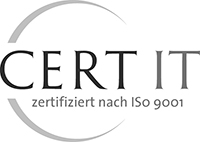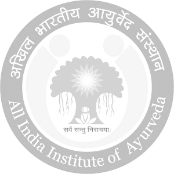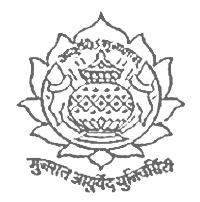Article by Vaidya Ram Manohar MD (Ayu)
A close analysis of the classical Ayurvedic texts reveals that an evidence-based approach to clinical practice was known at a very early stage in Ayurveda's formative history. The Charaka Samhita (the celebrated textbook on general medicine) explicitly emphasizes that results from clinical practice should be supported by evidence and logical reasoning. Not only that, if clinical results cannot be supported with convincing evidence, then the success must be dismissed as accidental. It is quite amazing that an evidence-based approach had already taken root in the tradition of Ayurveda several thousand years before our era.
Skepticism towards Ayurvedic treatments
Even more amazingly, clinical outcomes and the tasks of medical interventions were viewed very critically and skeptically - so much so that the efficacy of Ayurvedic treatments were doubted even by students, not to mention skeptics outside the community.
Agnivesha, an outstanding student of Sage Atreya, the founder of the Ayurvedic medical school, questions his teacher and does not mince words. Quite frankly, he tells his teacher that he is not convinced of the efficacy of Ayurvedic treatment in real life, for the simple reason that besides the patients who are treated by the best doctor, those who do not receive any medical treatment also sometimes get well. Since this was a matter of direct observation, it could be clearly concluded that Ayurveda was of no benefit at all.
Similar questions and statements were also formulated by a skeptic named Maitreya: undergoing Ayurvedic treatment was like trying to dry up a flowing river with a handful of sand.
The demand for evidence to prove the efficacy of Ayurveda is not a new phenomenon. The answers to the present day questionings that are being thrown at Ayurveda by the scientific world can only be found through a close research of the Ayurvedic tradition itself.
It is relatively interesting and enlightening to see how Sage Atreya answers these questions, for he is not imposing a blind faith, but rather working out a methodology for finding evidence that will provide proof of the efficacy of Ayurvedic treatments. Atreya emphasizes that the confusion regarding the definitive purpose of medical treatments is based on faulty thinking and a lack of understanding of the disease process itself. He clarifies that the function of medicine can only be appreciated through an understanding of the natural course of disease.
Diseases have different courses and not all need to be treated. There are diseases that are self-limiting or resolve spontaneously (abheṣajasādhya) and thus do not require any medical attention. On the other hand, there are diseases that do not respond to any treatment (bheṣajāsādhya). A doctor risks his reputation by making claims and treating these types of diseases. The usefulness of Ayurveda can be clearly understood in diseases that entail a change in the course of disease in response to medical treatment (bheṣajasādhya).
If one interprets the results of treatment using background medical knowledge of the natural course of disease, the benefits of medical treatment can be seen. Those who claim treatment success even though the disease is self-limiting are making a wrong judgment. Thus, it is also wrong to dismiss medical treatment as futile if it cannot change the course of an incurable disease. Moreover, it is important to note that Ayurveda admonishes the physician not to be misled by false signs of improvement. For example, a change from dull and gray to radiant in the appearance of the patient's face after prolonged illness from rājayakṣmā (a disease characterized by a breakdown of the general defenses, making the patient susceptible to many other diseases) may not be an improvement in the state of the disease, but may indicate a worsening. Here the physician must be alert to any false positive signs of clinical improvement and interpret them very carefully.
The Ayurvedic texts explicitly state that positive results obtained after medical treatment do not necessarily prove the effectiveness of the treatment. To the same extent, a negative result is evidence of the futility of a treatment. In other words, coincidences are not evidence of causation. The multifactorial nature of causal relationships needs to be understood. It is the foundation of Ayurveda, which is based on yukti, the understanding of the role played by a multitude of factors in the background of the appearance of any given phenomenon. Thus every treatment that is given should be looked at again in terms of its efficacy, whether positive or negative, including whether and to what extent the results of the treatment were influenced by the treatment itself. This is the practice-based approach that was advocated in the classical Ayurvedic texts.
Different approaches to evidence
Although Ayurveda is currently gaining attention and popularity worldwide, it is being questioned by the scientific world and authorities. In order to legitimize its importance in global healthcare, Ayurveda must rise to the challenge and provide data that proves the harmlessness and efficacy of its medicines and forms of treatment. However, this is not a challenge without precedent. In fact, it is an ongoing skepticism that confronts blind faith, and an opportunity to develop from it a firm state of informed belief that can strengthen and stabilize Ayurveda. It is not the need for evidence that is of interest to Ayurveda today; rather, it is the kind of evidence that is currently being asked for. That evidence which is acceptable to science is generated from a reductionist way of looking at knowledge and thus cannot always be successfully applied to a system of knowledge such as Ayurveda which is based on holism.
The Ayurvedic approach to evidence is mainly clinical in nature and based on retrospective analysis, whereas the modern scientific approach is mainly experimental and based on prospective analysis. In the context of biomedicine, we have the evidence-based medicine approach in which evidence takes precedence over practice. Evidence is generated in the laboratory and then proven in practice. In Ayurveda, however, we have an approach that is practice-based evidence, according to which evidence follows practice. In other words, evidence is generated from clinical practice. Laboratory studies to substantiate the evidence are done later. From this point of view, Indian scientists have proposed what is known as the reverse pharmacology approach to drug discovery. This approach works on the philosophy of getting evidence from clinical practice to conduct laboratory research for drug development.
Ayurvedic Approach
There are reasons for this major difference in approach to evidence preservation in Ayurvda and biomedicine. Ayurveda is a health care system that has been in vogue for several thousand years. The numerous herbs and formulations in the pharmacopoeia of Ayurveda have a long history in terms of human use. Further, Ayurvedic treatments are multimodal and often need to be customized for the patient. Therefore, studies cannot be conducted on a large population prior to use in a particular case. Ayurvedic doctors modify the combination of a particular set of known herbs according to a patient's idiosyncrasies. Every now and then, when a new herb is discovered, the prospective and experimental approach is used to understand its properties and clinical applications.
Scientific approach
In biomedicine, on the other hand, a disease-oriented approach is used - a drug is targeted to the disease process rather than to the individual patient. The drugs are almost always pureed, they are isolated chemical contents that have never been used on humans before, and they are tested first in the laboratory, then on animals, and then on humans all suffering from the same disease process.
The randomized clinical trial (RCT) design, in which the drug being studied is administered to a group of patients and compared to a negative (placebo) and positive (trial drug) sample, is sort of the gold standard for scientific evidence in the biomedical field. Blinding or secrecy of the subjects and investigators is another essential aspect of the study protocol.
This study design (RCT) and prospective evidence approach are not entirely foreign to the Ayurvedic tradition. Ayurvedic texts discuss prospective correlation (pūrvavat anumāna), retrospective correlation (śeṣavat anumāna), and simultaneous correlation (sāmānyato dṛṣṭa) of causal relationships. In the Indian logic tradition, there is the concept of proving a causal relation with the help of positive and negative controls. The context in which a causal relation is presumed and is yet to be proved is called pakṣa; that in which a causal relation has already been established is called sapakṣa. The context in which the causal relation has been proved to be non-existent is called vipakṣa. Pakṣa corresponds to the experimental drug under trial, sapakṣa to the positive control or control drug, and vipakṣa to the negative control or placebo.
According to the Indian knowledge tradition, an attempt to establish a causal relationship between a particular set of phenomena is valid only if it has been evaluated in terms of positive and negative controls. This is fully consistent with the modern concept of controlled clinical trials. Similarly, other levels of evidence, such as single reports, case studies, observational studies, and the like, are accepted to some extent in biomedicine. Based on the present discussion, we can surmise that Ayurveda is open to multiple approaches for obtaining evidence and knowledge. Such an approach is also emerging recently in biomedicine and there are discussions on the topic of degrees of evidence. However, in both systems weightings are different or quite opposite.
So what kind of evidence is acceptable for both systems?
There are few logical possibilities. Shrinking Ayurveda to the reductionist approach of biomedicine would be one solution. This model has already been experimented with and inspired, albeit with limited success, new ways of identifying new agents. Ethnopharmacology and bio-prospecting (collecting and analyzing substances found in nature), which are based on obtaining clues and insights from traditional medicine to develop new medicines, represent one way in which a scientific approach can be applied to Ayurveda. The majority of Ayurvedic research studies today are directed towards individual components of Ayurvedic treatments, be it an herb, a formula or therapy. Within this process, we lose sight of the whole Ayurvedic approach to healing, which is mainly multimodal and holistic.
If one tries to preserve the holistic nature of Ayurveda, one ends up with lower levels of evidence. Single area, case studies and observational studies seem to be able to preserve the totality of the Ayurvedic approach, but the quality of the evidence obtained is questionable. At this point, science and Ayurveda seem to diverge. If one chooses the precision of science, one loses the holism of Ayurveda and vice versa. The question now is, "Can we have both at the same time?"
It must be emphasized that this question has some place in the context of juxtaposing biomedicine and Ayurveda. This is because we are exploring the possibilities of meaningful dialogue between proponents of the two systems. Perhaps merely preserving the practice of Ayurveda is not of primary importance. However, the fact that there is agreement in both the Ayurvedic tradition and biomedicine regarding the need for evidence should be worth exploring whether there is a possibility of developing an evidence approach that would bridge the gap between the two systems.
There is reason to hope that open discussions and many exchanges between Ayurvedic doctors and scientists of modern medicine may ultimately help to find an approach to evidence generation out of mutual respect and understanding. This may well be different from the conventional observational research model or the controlled clinical trial model. Perhaps the approach is based on both models but has been modified and adapted accordingly. A closer look at the Ayurvedic tradition shows that it is a knowledge system capable of meeting the challenges of science and moving forward in a purposeful way.
With innovative ideas - inspired by a mindset that thinks outside the box - we could find ourselves in the position of doing good science in the future that validates and underpins Ayurvedic practice, thus validating both the highest scientific claims and the authentic practice of Ayurveda. It is in this direction that we need to get the ball rolling!












